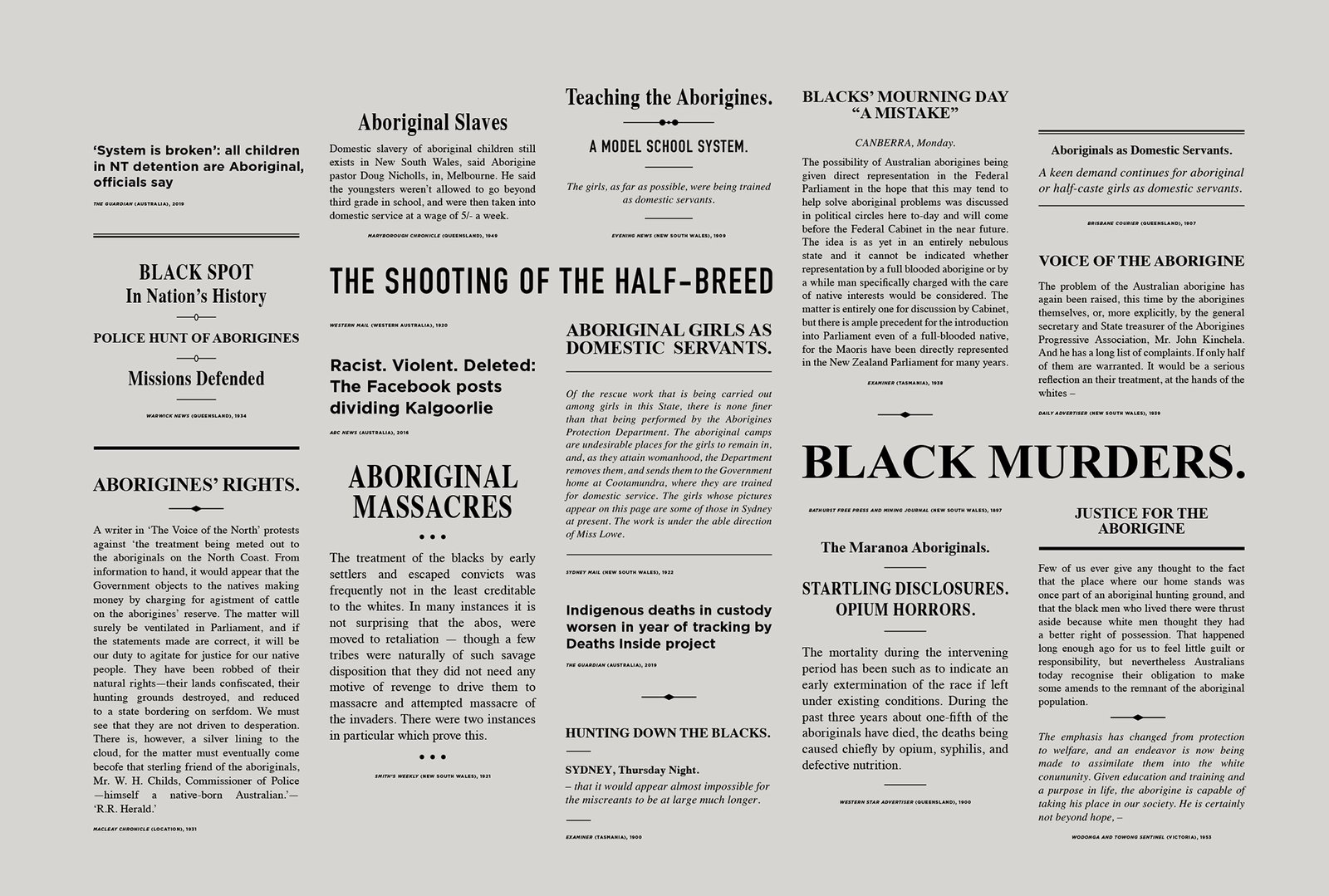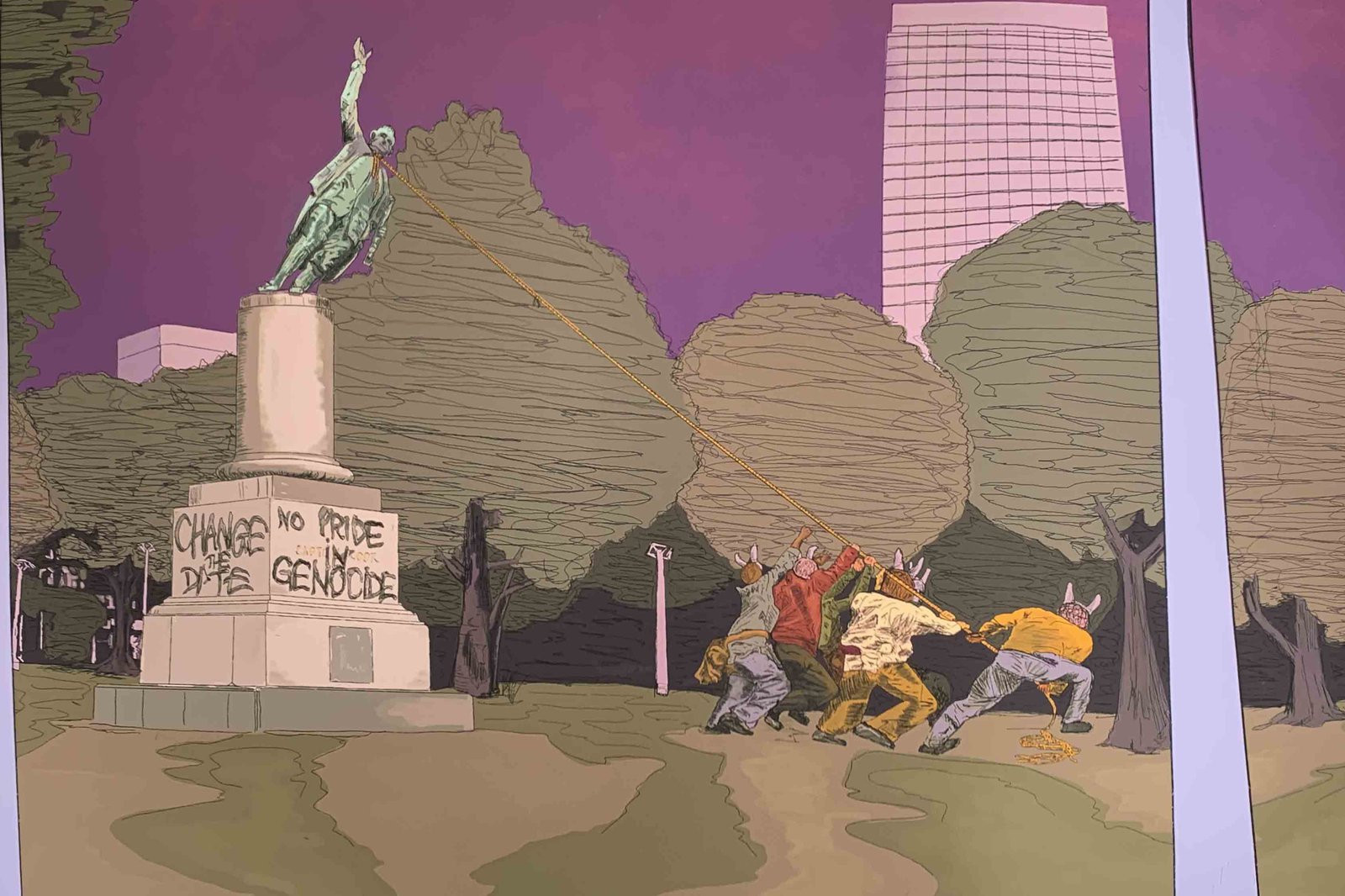The great Australian silence
On this page...
Curators’ acknowledgement
“We pay our respects and dedicate the Unsettled exhibition to the people and other Beings who keep the law of this land; to the Elders and Traditional Owners of all the knowledges, places, and stories in this exhibition; and to the Ancestors and Old People for their resilience and guidance.
We advise that there are some confronting topics addressed in this exhibition, including massacres and genocide. Aboriginal and Torres Strait Islander peoples should be advised that there may be images of people who have passed away.”
Laura McBride and Dr Mariko Smith, 2021.
The great Australian silence
In 1968, anthropologist W.E.H. Stanner talked in his Boyer lecture After the Dreaming about the “cult of forgetfulness” practiced on a national scale in Australia, which he termed “the Great Australian Silence”- where Australians do not just fail to acknowledge the atrocities of the past, but choose to not think about them at all, to the point of forgetting that these events ever happened.
A different history arose in the Australian memory and it formed negative stereotypes of First Nations peoples. These stereotypes entrenched the ongoing experience of the marginalisation and systematic discrimination of First Nations peoples in Australia.
Listening to and learning from First Nations peoples about their cultures and histories can allow avenues for us to start to remember differently, in ways that heal instead of harm.
Did you know?

Red, White and Blue 2008
Danie Mellor, Mamu, Ngagen, Ngajan
Mixed Media.
Australian Museum Collection.
© Australian Museum
Red, White and Blue 2008
Danie Mellor, Mamu, Ngagen, Ngajan
Mixed Media.
Australian Museum Collection.
In the colours of the British flag, three kangaroos are posed as figures who knew all, but professed no knowledge as to the impact of empire building, past or present: they see no evil, hear no evil, speak no evil. In another sense, these kangaroos stand also for the muted position of a culture that was dominated and undermined by the loss of language, displacement, and ultimately the deliberate attempt to curtail a way of life and exploit the natural resources – cultural, spiritual, social, and material – of the land.
Listen to Danie Mellor discuss the inclusion of his works Red, White and Blue in the Unsettled exhibition on ABC Radio’s Weekend Evenings with Sirine Demachkie on the 9 July 2021 program.
It is important to question what you read, see and/or hear about Aboriginal and Torres Strait Islander peoples in the media, history books and in conversations with family, friends and others.
Australian Media Articles 1800-2020

Australian Media Articles 1800-2020
Various Authors
Digital reproductions
© Australian Museum
Australian Media Articles 1800-2020
Various Authors
Digital reproductions
Aboriginal peoples are often viewed in Australian history as antagonists whose presence and visibility presents an uncomfortable truth: a reminder of this country’s unsettled past. In Australian media, First Nations peoples have been cast in particular roles and representations which serve the dominant colonial agenda: savage, in need of salvation, a dying race. These terms and perceptions presented over time normalise racist views which work to dehumanise First Nations peoples and justify colonisation.
This portrayal of First Nations peoples over time has normalised false, negative stereotypes in education, society and media today, to the point where large numbers of Australians believe them to be true.
Cook Falling, Tear It Down, Graphic Novel Study 2019

Cook Falling, Tear It Down, Graphic Novel Study 2019
Travis De Vries, Gamilaroi
Digital print on archival paper.
Australian Museum Collection Acquisition.
© Travis de Vries
Cook Falling, Tear It Down, Graphic Novel Study 2019
Travis De Vries, Gamilaroi
Digital print on archival paper.
Australian Museum Collection Acquisition.
References:
- Shirodkar, S. (2019). Bias against Indigenous Australians: Implicit association test results for Australia. Journal of Australian Indigenous Issues, 22(3-4), pp. 3-34.


